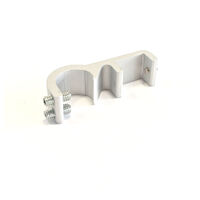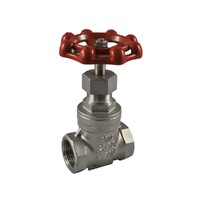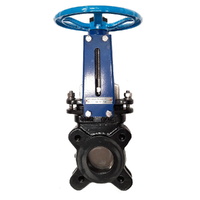Gate Valves
PCI has a complete range of Gate Valves available in Geelong. These included both threaded and flanged versions and in both metal seated and resilient seated models. Different applications require different types of Gate valves so the one used will be dependent upon the factors in that application. Some that are used for civil/potable water applications carry watermark and standards mark certifications. Different materials are available including brass, stainless steel, forged steel and cast/ductile iron.
-
What is a gate valve?
A gate valve is a common type of valve that works to isolate the flow of fluids like water, gas, and oil. It has a flat gate or wedge-shaped disc that slides into the valve body to block or allow the flow of fluid. It’s safe to say that gate valves are versatile enough to be used in a wide range of industries and applications where a tight shut-off and precise flow control are necessary. You’ll find that gate valves are regularly used in the oil and gas, chemical and mining industries, just to name a few. -
Types of gate valves
There are several types of gate valves, including rising stem gate valves, which have a stem that rises above the valve body when the valve is opened, indicating the position of the gate. In contrast to a rising stem gate valve, a non-rising stem gate valve has a gate that moves up and down without changing the position of the stem. These two types can then be broken down into seat types with the main two categories been resilient seat (soft seat) or a metal seat. Resilient seated gate valves are used in applications where the media is compatible with the soft seat such as water or inert gases. In contrast metal seated gate valves are used in applications where the media or temperature are not compatible with a soft seat such as steam or other high temperature uses. A soft seat will typically give a better seal than a metal to metal seat. -
How do gate valves work?
Gate valves work by using a gate or disc that moves up and down within the valve body to control the flow of fluid. When the valve is closed, the gate creates a seal against the valve seat, which prevents fluid from passing through. The operator opens the valve from turning a wheel or handles to raise the gate, allowing fluid to flow through the valve. Gate valves are designed to provide an unobstructed flow path when fully open, which reduces pressure drop and allows for higher flow rates. -
What is the main difference between a gate valve and a ball valve?
The main difference between a gate valve and a ball valve is how they isolate the fluid or gas flow through a pipe. Gate valves isolate flow by raising or lowering a gate or wedge that blocks or allows fluid to pass through a narrow orifice. Meanwhile, ball valves use a spherical ball with a hole in the centre to control flow. The ball rotates within a housing to open or close the valve, allowing for isolation of the line. Ball valves are commonly used in applications where frequent operation is required and the pipe size is generally smaller.


















